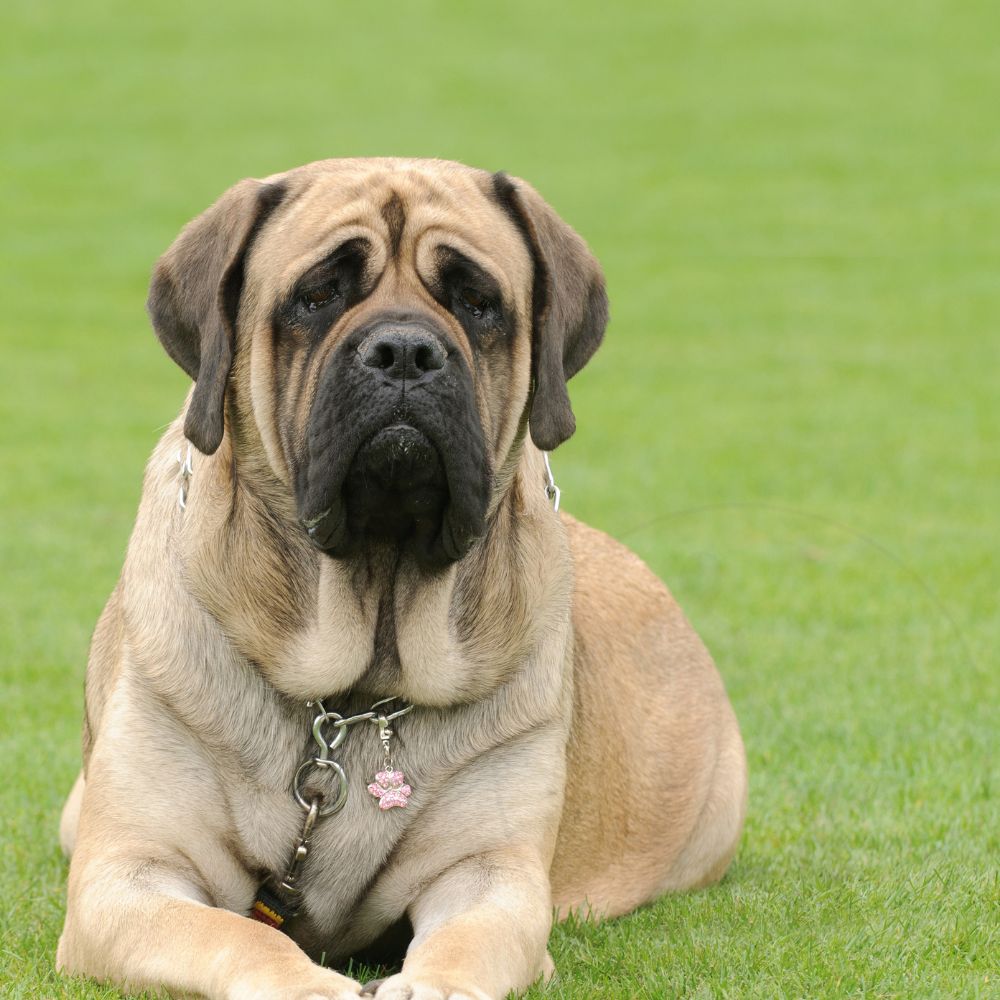Quick Facts about the Bullmastiff
- Origin: United Kingdom
- Weight: 50–59 kg (male), 45–54 kg (female)
- Life expectancy: 7–9 years
- Coat Colour: Fawn, red, or brindle (with black mask)
- Breed Group: Working
The Bullmastiff is a powerful and confident guardian dog known for its imposing presence, quiet strength, and deep devotion to its family. Bred to protect estates, it combines calm intelligence with fearless loyalty.
Bullmastiff History
The Bullmastiff was developed in 19th-century England by crossing the English Mastiff with the now-extinct Old English Bulldog. The goal was to create a silent yet powerful dog that could stop poachers without mauling them.
These “Gamekeeper’s Night Dogs” became famous for their stealth and bravery. The breed was standardised in the early 20th century and officially recognised by the AKC in 1934. Today, Bullmastiffs remain valued as estate guardians and loyal companions.

Bullmastiff Temperament
Quiet, self-assured, and deeply loyal, the Bullmastiff is an affectionate family protector. Despite its size, it is typically gentle with loved ones, including children, and reserved but not aggressive with strangers when well socialised.
This breed is naturally protective and doesn’t bark excessively—when it does, it’s worth listening. It requires confident leadership and early training to ensure calm, stable behaviour.
Note: Not a high-energy dog, but needs daily structure and clear boundaries. It thrives on calm authority and consistency.
Health and wellness
Bullmastiffs need moderate daily exercise—walks and structured play are sufficient. Intense activity should be avoided during puppyhood to protect developing joints.
Their short, dense coat is low-maintenance but sheds moderately. They’re sensitive to heat and should always have access to shade and water in warm climates.
Significant problems:
Hip and elbow dysplasia
Hypothyroidism
Bloat (gastric torsion)
Cancer (e.g., lymphoma, mast cell tumors)
Entropion (inward rolling eyelids)
Life expectancy: 7–10 years
🔍 Looking to go deeper into dog training?
Use these categories to explore targeted guides and articles on canine behavior, nutrition, obedience, entertainment, and more.









